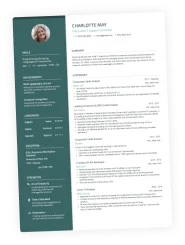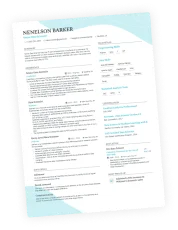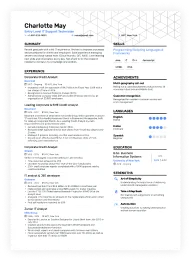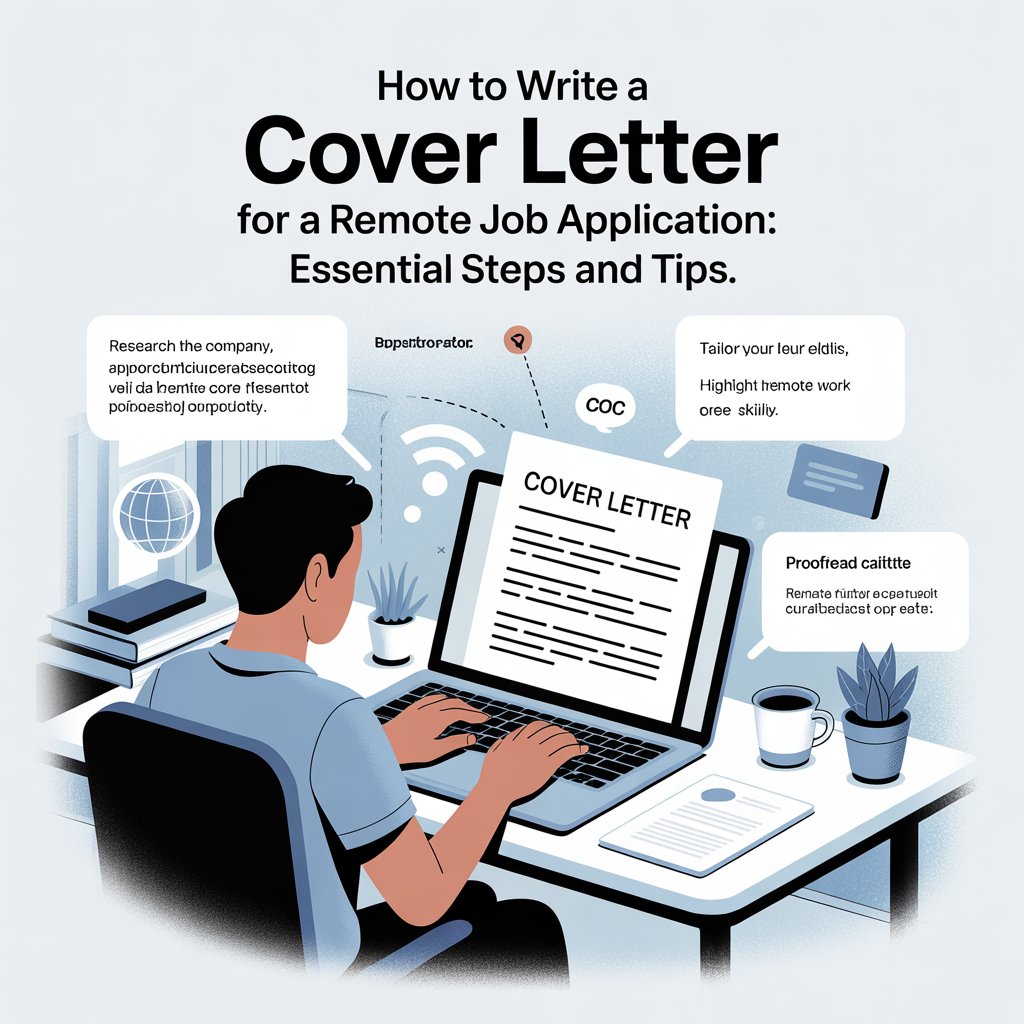When applying for a job, the cover letter salutation might seem like a small detail, but it can have a big impact on your chances of making a good impression. It’s the first thing hiring managers see, and it sets the tone for the rest of your letter. A well-crafted greeting can grab attention and show that you’ve done your homework, while a sloppy one can have the opposite effect. In this article, we’ll break down how to master your cover letter salutation so you can stand out in a competitive job market.
Key Takeaways
- The salutation is your first chance to impress the hiring manager.
- Using the correct name and title shows attention to detail.
- Personalizing your greeting can make a significant difference.
- Avoid common mistakes like using incorrect names or overly casual greetings.
- Tailor your salutation to fit the company culture for the best results.
Understanding The Importance Of A Cover Letter Salutation
The salutation in your cover letter is more than just a formality; it’s your first chance to make a positive impression. It shows you’ve paid attention to detail and respect the hiring process. A well-crafted salutation can set the tone for the entire letter, while a poorly chosen one can immediately turn off a potential employer. It’s like meeting someone for the first time – you want to start off on the right foot.
Why The Salutation Sets The Tone
The salutation is the reader’s initial point of contact with you, and it sets the stage for how they will perceive the rest of your application. It’s your opening statement, and it communicates your level of professionalism, respect, and attention to detail. Think of it as the handshake of your cover letter – firm, confident, and appropriate. A strong start can make the reader more receptive to your qualifications and experience. It’s about showing you understand business etiquette and can communicate effectively.
First Impressions Matter
First impressions are critical, and your cover letter salutation is a key part of that initial assessment. Recruiters often have to sift through many applications, and a simple mistake in the salutation can lead them to dismiss your application quickly. It’s not just about getting the name right; it’s about showing you’ve taken the time to research the company and the hiring manager. This attention to detail demonstrates your genuine interest in the position and your commitment to doing things correctly. Remember, you only get one chance to make a first impression, so make it count. Your cover letter design matters.
The Role Of Personalization
Personalizing your salutation shows you’ve gone the extra mile. Instead of using generic greetings, addressing the hiring manager by name demonstrates that you’ve done your research and are genuinely interested in the specific opportunity. Personalization can help you stand out from other candidates and create a more meaningful connection with the reader. It shows you’re not just sending out a mass email but have taken the time to tailor your application to this specific company and role. This can significantly increase your chances of getting noticed and moving forward in the hiring process.
A personalized salutation can make a significant difference in how your application is received. It shows you’re not just going through the motions but are genuinely interested in the opportunity and have taken the time to learn about the company and the hiring manager. This extra effort can set you apart from other candidates and increase your chances of getting an interview.
Choosing The Right Salutation For Your Cover Letter
Formal Greetings To Consider
When it comes to starting your cover letter, it’s important to think about how formal you need to be. Using a formal greeting shows respect and professionalism, which is almost always a good idea. Some solid choices include "Dear Mr./Ms./Dr. [Last Name]," or if you know their full name, "Dear [Full Name]." These are safe bets that work in many situations. If you’re unsure, it’s better to err on the side of formality. It’s also a good idea to use titles like Dr. if you know the person has earned a doctorate. This shows you’ve done your research and are paying attention to detail. Remember, the goal is to make a positive first impression, and a formal greeting can help you do just that.
When To Use Informal Greetings
While formality is generally preferred, there are times when a more informal greeting might be okay. This usually depends on the company culture. If you’re applying to a startup or a company with a known casual environment, something like "Hello [First Name]" or even just "Hi [First Name]" could work. However, proceed with caution. It’s really important to be sure about the company culture before going this route. If you’re not sure, stick with a formal greeting. It’s also worth noting that even in casual environments, it’s often best to start with a slightly more formal approach and then adjust your tone as you communicate further. Think of it as starting on the right foot and then adapting as needed. You can also make your cover letter shine by using Grammarly to polish your writing.
Avoiding Common Mistakes
There are a few common mistakes to watch out for when choosing your cover letter salutation. One big one is using the wrong name or title. Always double-check the spelling of the person’s name and make sure you’re using the correct title (Mr., Ms., Dr., etc.). Another mistake is being too casual. Avoid overly friendly greetings like "Hey" or "Hi there!" unless you’re absolutely certain that’s appropriate for the company culture. It’s also a good idea to avoid using first names only unless you know the person well. Finally, don’t forget the punctuation! Always end your salutation with a comma. Avoiding these mistakes can help you make a strong first impression and show that you’re detail-oriented and professional. Remember, your salutation is your first chance to show you’re the right person for the job.
Choosing the right salutation is more than just picking a greeting; it’s about showing respect, understanding the company culture, and making a positive first impression. It sets the tone for your entire cover letter and can influence how the reader perceives you as a candidate.
How To Address A Cover Letter When You Know The Hiring Manager
Using The Correct Name
When you know the hiring manager’s name, it’s important to use it! This shows you’ve done your research and are serious about the position. Always double-check the spelling of their name on LinkedIn or the company website. Using the wrong name, or misspelling it, can create a negative first impression. It’s a small detail that speaks volumes about your attention to detail. If the hiring manager has a preferred name or goes by a nickname, use that instead of their formal first name. For example, if their name is Robert but they go by Bob, address them as "Dear Bob." This shows you pay attention to the small details. It’s also a good idea to check if they use any professional titles in their email signature or on their LinkedIn profile.
Including Job Titles
Including the job title in your salutation can add a layer of formality and respect, especially in more traditional industries. If you’re unsure of the hiring manager’s name, but know their title, you can use that. For example, "Dear Hiring Manager" or "Dear [Department] Head." However, if you do know their name, it’s generally better to use it. Using both the name and title can sometimes feel overly formal, but it depends on the company culture. If you’re unsure, err on the side of caution and stick with just the name. If you are going to use the title, make sure you have the correct title. A wrong title can be just as bad as a misspelled name. It shows a lack of attention to detail. You can usually find the correct job title on LinkedIn or the company website.
Maintaining Professionalism
Maintaining professionalism is key, even when you know the hiring manager’s name. Avoid overly casual greetings like "Hey [Name]" or "Hi [Name]!" Stick to formal greetings like "Dear [Mr./Ms./Mx. Last Name]." If you’re unsure of their gender, you can use "Dear [First Name] [Last Name]." It’s always better to be too formal than too casual, especially in the initial stages of the application process. Remember, your cover letter is a professional document, and your salutation should reflect that. Even if the company has a relaxed culture, it’s important to make a good first impression. A professional salutation shows that you respect the hiring manager and the company. It sets the tone for the rest of your cover letter and demonstrates your professionalism.
A good rule of thumb is to mirror the level of formality used in the job posting or on the company website. If they use formal language, stick to formal greetings. If they use more casual language, you can be slightly more relaxed, but still maintain a level of professionalism.
Here are some examples of professional salutations:
- Dear Mr. Smith,
- Dear Ms. Jones,
- Dear Dr. Lee,
- Dear [First Name] [Last Name],
Crafting A Salutation When The Hiring Manager’s Name Is Unknown
General Greetings That Work
When you don’t have a specific name, it’s still important to start your cover letter with a professional salutation. A general greeting is perfectly acceptable in these situations. Some solid options include "Dear Hiring Manager," or "Dear [Department Name] Team," if you know which department is hiring. Avoid outdated phrases like "To Whom It May Concern," as they can come across as impersonal and detached. It’s better to show you’ve put some thought into addressing the letter, even if you don’t have a specific contact. Using a general greeting shows respect for the recipient.
Using Company Titles
Another approach is to use a company title. For example, "Dear Recruiting Team" or "Dear Human Resources Department." This can be especially effective if you’re applying to a larger company where the hiring process is managed by a specific team. Make sure to research the company’s structure to identify the most appropriate title. This demonstrates that you’ve done your homework and are genuinely interested in the position. It’s a simple way to show you’re not just sending out generic applications. Here are some examples:
- Dear Recruiting Team,
- Dear Human Resources Department,
- Dear [Specific Department] Hiring Committee,
Navigating Casual Company Cultures
While it’s generally best to stick with a formal salutation, you might encounter companies with very casual cultures. In these cases, you might be tempted to use a more informal greeting like "Hello" or "Hi." However, it’s usually safer to err on the side of formality, especially in a cover letter. A slightly more relaxed option could be "Dear [Company Name] Team," but avoid anything too casual like "Hey" or "Greetings." Remember, you’re trying to make a good first impression, and professionalism is key.
When in doubt, stick to a more formal greeting. It’s always better to be perceived as respectful and professional than to risk coming across as too casual or familiar. This shows you understand business etiquette and are taking the application process seriously.
The Impact Of Personalization In Your Salutation
Why Personalization Matters
In today’s job market, standing out is more important than ever. A generic cover letter just won’t cut it. Personalization shows you’ve taken the time to understand the company and the specific role. It demonstrates a genuine interest that can set you apart from other applicants. Think of it as a way to make a connection before they even read the rest of your application. It’s about making a memorable first impression.
How To Research Hiring Managers
Finding the hiring manager’s name might take a little digging, but it’s worth the effort. Here are a few places to start:
- LinkedIn: This is often the most reliable source. Search for people in the HR department or those with relevant job titles.
- Company Website: Check the "About Us" or "Team" pages. Sometimes, you’ll find employee directories.
- Company Directory: If you have any contacts at the company, ask if they can provide the hiring manager’s name.
- Recruiting Events: If you attended a recruiting event, check your notes or follow up with contacts you made.
If you still can’t find a name, don’t stress too much. There are still ways to personalize your salutation, which we’ll cover later. The key is to show you’ve made an effort.
Examples Of Personalized Greetings
Here are a few examples of personalized greetings, depending on the level of formality you’re aiming for:
- Formal: "Dear Mr./Ms. [Last Name],"
- Semi-Formal: "Dear [First Name] [Last Name],"
- If you know their team: "Dear [Team Name] Team,"
- If you know their role: "Dear Hiring Manager,"
Remember to always use a colon after the salutation. Choosing the right cover letter salutation can make a big difference.
Common Salutation Mistakes To Avoid
Using Incorrect Names
One of the most glaring errors you can make is using the wrong name. Always double-check the spelling of the hiring manager’s name. It demonstrates a lack of attention to detail, which can be a significant red flag for employers. Imagine how you’d feel if someone misspelled your name repeatedly. It’s disrespectful, right? This is especially important if the name is uncommon or has multiple variations. A simple search on LinkedIn or the company website can prevent this easily avoidable mistake.
- Verify the spelling.
- Confirm the correct title (Mr., Ms., Dr., etc.).
- Use online resources to cross-reference.
Overly Casual Greetings
While some companies embrace a more relaxed culture, a cover letter is generally not the place to be overly casual. Avoid greetings like "Hey," "Hiya," or "What’s up?" These are too informal and can come across as unprofessional, especially in more traditional industries. It’s better to err on the side of formality, at least initially. Even if you’ve researched the company and found that they have a laid-back vibe, it’s still wise to maintain a degree of professionalism in your initial communication. Think of it as dressing for an interview – you might dress more casually for a tech startup than for a law firm, but you’d still aim for a polished and presentable look. Sticking to the formal, respectful tone that acknowledges the distance between you and the reader (HR and/or Hiring Manager) is your best bet here. Shortening the distance by interjecting informal salutations may actually do you a disservice and create the opposite effect to what you aim for. Hence, steer clear away from any openings like:
- Hi there!
- Hello!
- Hi!
It’s generally best to stick with "Dear [Name]" unless you have a very good reason to do otherwise. This shows respect and professionalism, which are always valued.
Neglecting To Research
Failing to do your homework before writing your cover letter can lead to several salutation-related blunders. Researching the company and, if possible, the hiring manager is essential. This allows you to tailor your greeting appropriately. For example, if you discover the hiring manager has a Ph.D., addressing them as "Dr. [Last Name]" demonstrates respect for their credentials. Similarly, understanding the company culture can help you gauge the level of formality that’s appropriate. If you proceed with a semi-formal greeting after your company research and you have identified that the organizational culture allows it (for example in a start-up), you can just address the person by their first name:
- Dear Sali,
- Dear Antoana,
- Dear Ivan,
Pay attention that the comma always comes after the name and not before it! However, if you go for the very formal communication style (for example for a Corporate or Governmental organization with a strict hierarchical structure), you’d best use this format of salutation with the person’s surname:
- Dear Mr. Salomez,
- Dear Mrs. Perruci,
Tips For Writing An Effective Cover Letter Salutation
Keep It Simple And Direct
When crafting your cover letter salutation, simplicity is key. Avoid overly complex or flowery language. A straightforward greeting is often the most effective. It shows respect without being ostentatious. Think of it as setting a clear, professional tone right from the start. Don’t try to be too clever or creative here; clarity trumps everything else. You want the hiring manager to immediately recognize your professionalism and focus on the content of your letter, not the complexity of your greeting. For example, stick to "Dear Mr./Ms./Mx. [Last Name]" unless you have a very good reason to do otherwise.
Be Respectful And Polite
Politeness is non-negotiable in a cover letter salutation. Always use a respectful tone, regardless of the company’s culture. Even if the company seems laid-back, it’s better to err on the side of formality in your initial contact. Using "Dear" is generally a safe bet, as it conveys respect without being overly familiar. Remember, you’re trying to make a good first impression, and professional tone is a key component of that. Avoid slang, colloquialisms, or overly casual language. Your goal is to show that you take the opportunity seriously and that you understand the importance of professional communication.
Match The Company Culture
While it’s important to be respectful, you should also consider the company’s culture when choosing your salutation. Research the company to get a sense of their communication style. Are they formal and traditional, or more relaxed and modern? This will help you tailor your greeting appropriately. If the company website and social media presence suggest a casual environment, a simple "Hello [Hiring Manager Name]" might be acceptable. However, if the company seems more formal, stick to "Dear Mr./Ms./Mx. [Last Name]". If you’re unsure, it’s always best to address a cover letter with a more formal approach.
Matching the company culture in your salutation shows that you’ve done your research and that you’re able to adapt to different professional environments. It demonstrates attention to detail and a willingness to fit in with the company’s values.
Examples Of Strong Cover Letter Salutations
Formal Examples
When aiming for a formal tone, it’s best to stick with traditional salutations. These are particularly useful when applying to more conservative industries or when you’re unsure of the company culture. Using a formal salutation shows respect and professionalism.
- "Dear Mr./Ms./Dr. [Last Name],"
- "Dear [Job Title] Hiring Team,"
- "Dear [Department] Head,"
Casual Yet Professional Options
If the company culture leans towards a more relaxed environment, you can opt for a slightly less formal approach. However, it’s important to maintain a level of professionalism. These options work well when you’ve done your research and know the company values a more approachable tone. Remember, it’s about finding a balance. You can also use a cover letter salutation that is more casual.
- "Dear [First Name] [Last Name],"
- "Hello [First Name] [Last Name],"
- "Greetings [Company Name] Team,"
Creative Approaches
In certain industries, such as marketing or design, a creative approach can help you stand out. However, proceed with caution. Ensure your creativity aligns with the company’s brand and values. A well-crafted, personalized greeting can demonstrate your understanding of the company’s unique identity. It’s a risk, but it can pay off if done right. You can also use a cover letter example to help you.
A creative salutation should still be respectful and relevant. Avoid being overly familiar or humorous, as this can come across as unprofessional. Instead, focus on demonstrating your genuine interest in the company and the role.
- "Dear [Company Name] Enthusiasts,"
- "Hello [Team Name] at [Company Name],"
- "Excited to Connect with [Company Name],"
The Connection Between Salutation And Overall Impression
How Salutation Affects Reader Engagement
The salutation is your first direct interaction with the reader, and it significantly impacts their engagement with your cover letter. A well-crafted salutation immediately captures attention and sets a positive tone, while a generic or incorrect one can lead to disinterest. Think of it as the handshake of your application; a firm, confident greeting makes a better impression than a limp or awkward one. It’s about making the reader want to continue reading. A strong start can enhance your job application and keep them hooked.
Building Rapport From The Start
Rapport is about creating a connection, and your salutation is the initial step in building it. Using the hiring manager’s name, when possible, shows you’ve done your research and are genuinely interested in the position. This small act of personalization can make a big difference. It demonstrates respect and attention to detail, qualities that employers value. It’s not just about being polite; it’s about showing you care. Building rapport early on can maximize impact.
The Psychological Impact Of Greetings
The words we use have a psychological effect, and greetings are no exception. A formal and respectful salutation conveys professionalism and competence. Conversely, an overly casual or informal greeting can undermine your credibility. The psychological impact is subtle but powerful. Consider these points:
- Formality: Sets the tone for the rest of the letter.
- Personalization: Shows you value the individual.
- Respect: Demonstrates your understanding of professional norms.
The salutation is more than just a formality; it’s a psychological cue that influences how the reader perceives you and your application. It’s a small detail that can have a significant impact on the overall impression you make.
Think of it this way: you wouldn’t walk into a business meeting and start with "Hey, what’s up?" The same principle applies to your cover letter. Start strong, be respectful, and make a positive first impression.
Adapting Your Salutation For Different Industries
Understanding Industry Norms
It’s important to know that what works in one industry might not fly in another. Different industries have different expectations when it comes to formality. For example, a tech startup might appreciate a more casual approach, while a law firm will expect a formal greeting. Doing your homework is key. You can often get a feel for the company culture by checking out their website and social media presence. This will give you clues about the appropriate level of formality for your cover letter salutation.
Tailoring Your Approach
Once you understand the industry norms, you can tailor your salutation accordingly. This means choosing the right title (Mr., Ms., Dr., etc.) and using the appropriate level of formality in your greeting. If you’re applying to a company with a relaxed culture, a simple "Dear [First Name]" might be fine. However, if you’re applying to a more traditional organization, you’ll want to stick with "Dear Mr./Ms. [Last Name]". Always err on the side of caution if you’re unsure. It’s better to be too formal than too casual. Remember, you’re trying to make a good first impression, and your salutation is a big part of that. It shows you understand and respect the company’s culture.
Examples By Industry
Here are a few examples to illustrate how your salutation might vary depending on the industry:
- Tech Startup: "Dear [First Name],"
- Law Firm: "Dear Mr./Ms. [Last Name],"
- Marketing Agency: "Dear [Hiring Manager Name],"
- Healthcare: "Dear Dr. [Last Name],"
It’s always a good idea to research the specific company and hiring manager before sending your cover letter. A little bit of effort can go a long way in showing that you’re genuinely interested in the position and that you’re a good fit for the company culture. If you can’t find a specific name, using "Dear Hiring Manager" or "Dear [Department Name] Team" is perfectly acceptable. Just avoid generic greetings like "To Whom It May Concern". Using the right cover letter strategies can make all the difference.
Here’s a table summarizing the above:
| Industry | Salutation Example |
|---|---|
| Tech Startup | Dear [First Name] |
| Law Firm | Dear Mr./Ms. [Last Name] |
| Marketing Agency | Dear [Hiring Manager Name] |
| Healthcare | Dear Dr. [Last Name] |
Final Thoughts On Cover Letter Salutations
Recap Of Key Points
So, we’ve journeyed through the world of cover letter salutations, and it’s clear they’re more than just a formality. They’re your opening act, setting the stage for everything that follows. Remember, a strong salutation is respectful, tailored, and error-free. It shows you’ve done your homework and care about making a good first impression. Don’t underestimate the power of getting it right!
Encouragement To Personalize
While general greetings have their place, personalization truly makes your application stand out. It shows you’ve taken the time to research the company and the hiring manager. This effort can significantly increase your chances of getting noticed. It’s about making a connection, even before they read the rest of your qualifications. So, go the extra mile and personalize that cover letter closing!
The Importance Of A Strong Start
Your salutation is your first handshake. It’s the initial point of contact and can greatly influence how the rest of your cover letter is received. A weak or inappropriate salutation can create a negative impression that’s hard to shake off. A strong start builds rapport and encourages the reader to engage with your application. Make it count!
In conclusion, choosing the right salutation for your cover letter is important. It sets the tone for your application and shows your professionalism. Remember to address the hiring manager by name if you can. If you need more help with your job applications, visit our website for tips and tools to make the process easier!
Wrapping It Up: Your Cover Letter Salutation Matters
In conclusion, nailing your cover letter salutation is a big deal. It’s your first chance to make a good impression, and you want to get it right. Whether you know the hiring manager’s name or not, using a thoughtful greeting can set the tone for the rest of your letter. Remember, a personal touch goes a long way, and it shows you’ve done your homework. So, take the time to craft a proper salutation and start your cover letter strong. With these tips in mind, you’ll be on your way to catching the attention of hiring managers and landing that interview.
Frequently Asked Questions
What should I write if I don’t know the hiring manager’s name?
If you don’t know the hiring manager’s name, use a general greeting like ‘Dear Hiring Manager’ or ‘To Whom It May Concern.’ If the company is casual, a simple ‘Hello’ might work too.
How can I make my cover letter stand out?
Make your cover letter stand out by starting with a strong opening that shows your enthusiasm for the job and mentions something specific about the company or your skills.
Is it okay to use a casual greeting?
Using a casual greeting is fine if the company culture is relaxed. However, if you’re unsure, it’s safer to stick with a formal greeting.
How do I personalize my cover letter?
You can personalize your cover letter by mentioning the specific job you’re applying for and why you’re interested in it, along with any relevant achievements.
What are some common mistakes in cover letter salutations?
Common mistakes include using the wrong name, being too casual, or not doing enough research about the company and its culture.
How should I end my cover letter?
End your cover letter with a polite closing, thanking the reader for their time and expressing your eagerness for a follow-up, like an interview.
What is the best way to address a cover letter?
The best way to address a cover letter is to use a respectful salutation like ‘Dear [Name]’ if you know the person’s name, or a general greeting if you don’t.
How important is the salutation in a cover letter?
The salutation is very important because it sets the tone for your letter and is often the first impression you make on the hiring manager.












